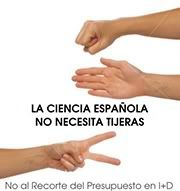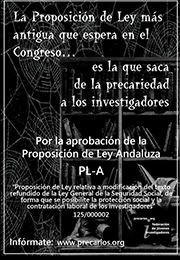El profesor español Feliu Maseras, del Instituto Catalán de Investigación Química (ICIQ) aparece citado en la documentación de la Fundación Nobel: ‘Importantes contribuciones han sido aportadas no sólo por los tres galardonados de este año, sino también por muchos otros incluyendo J. Gao, F. Maseras y K. Morokuma, U.C. Sing y P. Kollman y H.H. Senn y W. Thiel’.
La relevancia de la investigación merecedora del premio Nobel de Química de este año, puede entederse mejor en palabras del propio Maseras
"Los tres investigadores premiados contribuyeron de manera fundamental al desarrollo inicial de los métodos multiescala, que son métodos que posibilitan el estudio de moléculas muy grandes mediante química computacional, en el ordenador.
Los métodos multiescala añaden otra dimensión a la química computacional, ya que se utilizan distintos métodos para distintas regiones del mismo sistema químico a estudiar. El caso más típico es la utilización de un método cuántico, preciso pero caro, para describir una región pequeña del sistema, y un método de mecánica molecular, con menos coste computacional, para el resto del sistema.
En muchos sistemas químicos existen regiones muy específicas que hay que describir con mayor precisión. Por ejemplo, las enzimas contienen un centro activo bien determinado y de tamaño relativamente pequeño y una región de proteína mucho mayor que engloba al centro activo y se diferencia mucho de éste. En este caso, gracias a los métodos multiescala, podemos estudiar el sistema global, ya que se aplican métodos cuánticos en el estudio del centro activo y métodos de mecánica molecular para el resto.
Warshel y Levitt publicaron el primer artículo que describía los métodos multiescala, en los años 70, pero en aquel momento no tuvo mucha repercusión porque era una investigación muy avanzada para su época y no se podía aplicar, ya que requería el uso de ordenadores más potentes que los que existían entonces. Más tarde, en la década posterior, apareció el trabajo de Karplus, que hizo una adaptación del método desarrollado por Warshel y Levitt que permitió extender su aplicación en el campo del cálculo de sistemas bioquímicos. Su trabajo sentó las bases para la expansión de este tipo de métodos que tuvo lugar en la última década del siglo pasado.
El desarrollo de estos métodos posibilita el estudio teórico de reacciones enzimáticas, como por ejemplo el proceso acoplamiento de un medicamento a su proteína diana. También se pueden aplicar de manera exitosa en otras áreas de la química, como en procesos complejos de catálisis homogénea."
Feliu Maseras trabajó con otra de las grandes figuras en el mundo de los métodos multiescala, el profesor Morokuma. Una de sus investigaciones conjuntas, la que aparece citada en la descripción que ha facilitado la Real Academia Sueca de las Ciencias acerca de la investigación premiada en esta última edición, consiste en una adaptación y generalización de los métodos multiescala para facilitar su aplicación en otros campos de la química, distintos de la bioquímica, como la catálisis homogénea.
Ésta es la segunda vez que el profesor Maseras aparece nombrado como referencia en los Nobel. El profesor Akira Suzuki, Premio Nobel de Química en 2010, en la Nobel Lecture que tuvo lugar el 8 de diciembre de 2010 en la Universidad de Estocolmo, también hace referencia a un artículo del profesor Maseras sobre una investigación desarrollada en el ICIQ.
 |
| Feliu Maseras |
Martin Karplus, Michael Levitt and Arieh Warshel have been awarded the Nobel Prize 2013 in Chemistry for their work on the development of multiscale methods, keys to lay the foundations of modern computational chemistry.
The Spanish professor Feliu Maseras, from the Instituto Catalán de Investigación Química (ICIQ), has been cited in the documents of the Nobel Foundation: 'Important contributions have been given not only by this year's laureates but also by many others including J. Gao, F. Maseras and K. Morokuma, C.U. Sing and P. Kollman and H. H. Senn and W. Thiel'.
The relevance of the research awarded with this year's Nobel Prize in Chemistry, can be better understended using the own Maseras's words
"The three laureates' contribution was pivotal to the initial development of multiscale methods, which are methods that allow the study of very large molecules by computational chemistry.
Multiscale methods add another dimension to computational chemistry, as they use different methods for different regions of the same chemical system. The most typical case is the use of quantum methods, which are accurate but expensive, to describe a small region of the system, and a method of molecular mechanics, with less computational cost, for the entire system.
In many chemical systems there are very specific regions that require a more accurate description. For instance, an enzyme consists of a well-defined and relatively small in size active site, and a much larger protein region surrounding the active center and very different from this one. In this case, multiscale methods allows the study of the global system: Quantum methods are applied in the study of the active site whereas molecular mechanics methods are used for the rest of the system.
Warshel and Levitt published the first article describing multiscale methods back in the 70s. At that time, those results did not have much impact because the investigation was very advanced for its time and it could not be applied, since it required the use of more powerful computers than did not exist back then. Karplus' results appeared a decade afterwards. He adapted the method developed by Warshel and Levitt to make it suitable for a wider application in the field of biochemical systems calculation. His work laid the foundations for the expansion of such methods, which took place in the last decade of the last century.
The development of these methods enables the theoretical study of enzymatic reactions, such as the coupling process of a drug to its target protein. They can also be successfully applied in other areas of chemistry, such as complex processes in homogeneous catalysis."
Feliu Maseras has worked with another of the great figures in the world of multiscale methods, Professor Morokuma. One of their joint research papers, the one that is mentioned in the description that has facilitated the Royal Swedish Academy of Sciences, deals with an adaptation of multiscale methods to facilitate its application in other chemistry fields, other than biochemistry, like for instance homogeneous catalysis.
This is the second time that Professor Maseras is referenced in the Nobels. Professor Akira Suzuki, Nobel Prize in Chemistry in 2010, also refers to an article by Professor Maseras during his Nobel Lecture at the University of Stockholm in December 8th, 2010.
Tomado de /Taken from ICIQ
Resumen del trabajo de Maseras citado por la Fundación Nobel/Abstract of the Masera's paper cited by the Nobel Foundation
IMOMM: A new integrated ab initio + molecular mechanics geometry optimization scheme of equilibrium structures and transition states
Feliu Maseras and Keiji Morokuma
Journal of Computational Chemistry 1995 16(9) 1170–1179
Abstract
A new computational scheme integrating ab initio and molecular mechanics descriptions in different parts of the same molecule is presented. In contrast with previous approaches, this method is especially designed to allow the introduction of molecular mechanics corrections in full geometry optimizations concerning problems usually studied through ab initio calculations on model systems. The scheme proposed in this article intends to solve some of the systematic error associated with modeling through the use of molecular mechanics corrections. This method, which does not require any new parameter, evaluates explicitly the energy derivatives with respect to geometrical parameters and therefore has a straightforward application to geometry optimization. Examples of its performance on two simple cases are provided: the equilibrium geometry of cyclopropene and the energy barriers on SN2 reactions of alkyl chloride systems. Results are in satisfactory agreement with those of full ab initio calculations in both cases














No hay comentarios:
Publicar un comentario